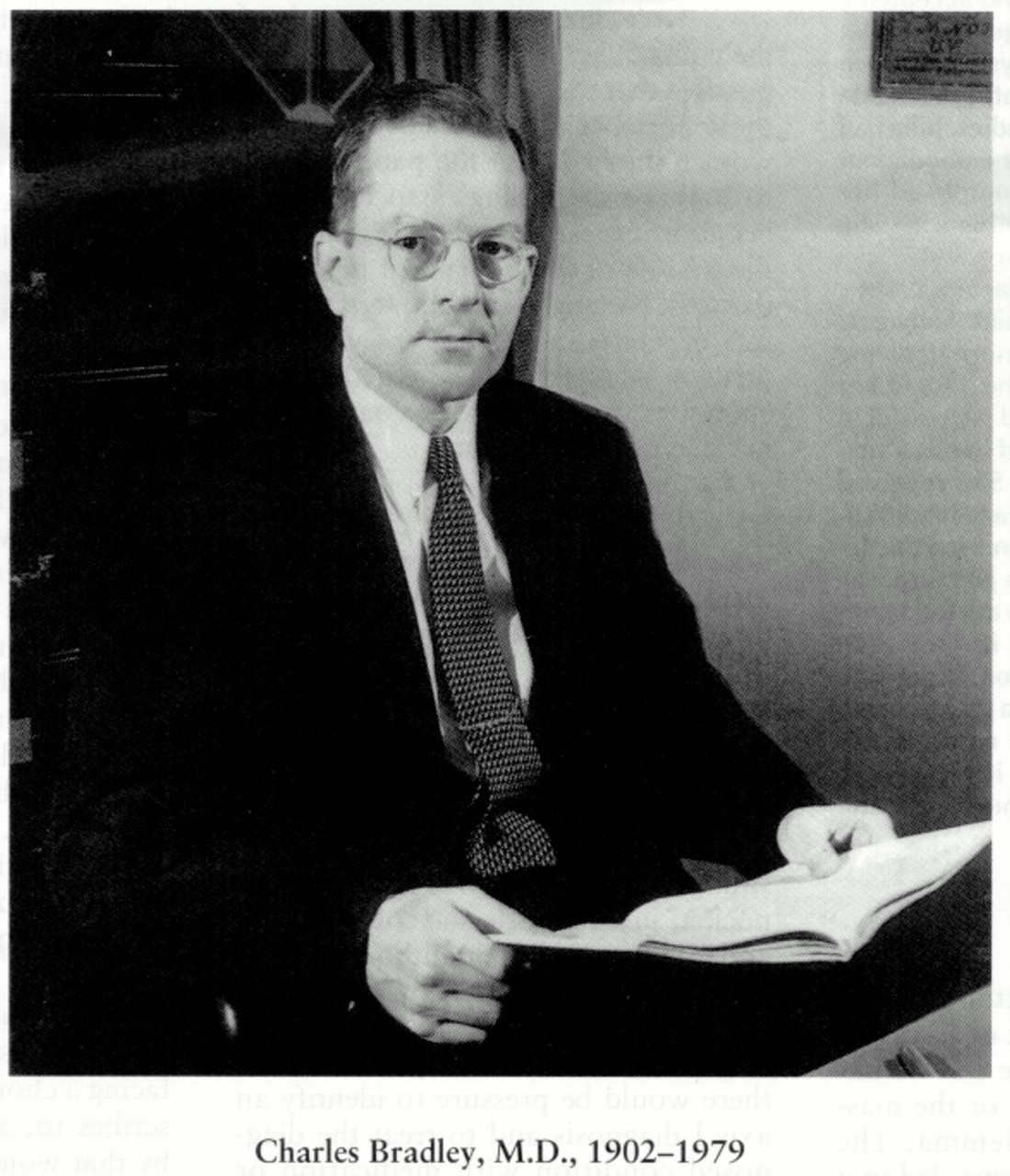In 1937, Charles Bradley noted that 14 of 30 children with behavior problems showed a “spectacular change in behavior.remarkably improved school performance” during 1 week of treatment with benzedrine
(1, p. 582). His subsequent research and that of others established the benefit of psychostimulants in the treatment of attention deficit hyperactivity disorder (ADHD). Bradley's 1937 observation now stands among the most important psychiatric treatment discoveries.
Charles Bradley made this discovery while serving as Medical Director of the Emma Pendleton Bradley Home—now Bradley Hospital—in East Providence, R.I. The Bradley Home—founded by George Bradley, Charles's great-uncle, and named for George Bradley's neurologically impaired daughter, Emma—opened in 1931 to treat children with nervous disorders. A year later, Charles Bradley, fresh out of his residency at Babies Hospital in New York, joined its staff.
The benzedrine discovery was a byproduct of the thorough neurological evaluations carried out under Bradley's direction, which included pneumoencephalography. Bradley began treating children who suffered postpneumoencephalography headaches, presumably due to spinal fluid loss, with benzedrine, speculating that because benzedrine is a stimulant it would stimulate the choroid plexus to produce spinal fluid.
The benzedrine did not do much for the headaches, but teachers noticed that some of the children taking benzedrine experienced a striking improvement in their schoolwork. The children themselves noticed the improvement and dubbed the medicine “arithmetic pills.” Bradley pursued the discovery in a controlled trial that showed benzedrine's beneficial effect on school performance.
Bradley's pursuit of this chance observation is of particular note in the light of psychiatric practice at the time. Psychological interventions were regarded as the obvious treatments for behavior disorders. Although Bradley and his colleagues published their observations in prominent journals and they were reported in the media as well, 25 years passed before anyone attempted to replicate his observations, and more than 25 years passed before stimulants became widely used for ADHD.
Charles Bradley had more than one string in his bow—he invented a chair to make pneumoencephalography in children easier, pioneered the residential treatment of children with behavior disorders, wrote extensively about childhood schizophrenia, and established the Bradley Home as a center for treatment, research, and education in child psychiatry.
Painfully aware that most of the psychological afflictions of children had no effective treatment, Bradley felt that in order for progress to occur in the treatment of disturbed children, more people needed to be educated in child psychiatry. Although he was the scion of a prominent Rhode Island family—Roger Williams was an ancestor—and had lived in Rhode Island almost all his life, in 1948 Bradley went to the University of Oregon Medical School to found and direct a department of child psychiatry.


